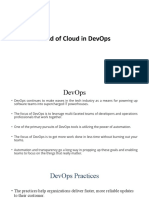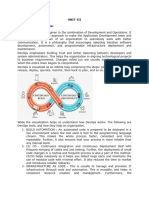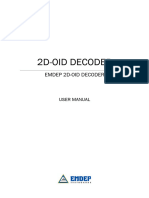0% found this document useful (0 votes)
31 views3 pagesAWS DevOps Guide
The document is a comprehensive guide on AWS DevOps, covering essential topics such as cloud computing, DevOps principles, and various AWS tools like CodePipeline, CodeCommit, and CodeDeploy. It outlines the advantages of cloud computing, types of cloud services, and deployment models, as well as the importance of automation and collaboration in DevOps. Additionally, it includes practice questions to reinforce understanding of the material presented.
Uploaded by
dreambot.diariesCopyright
© © All Rights Reserved
We take content rights seriously. If you suspect this is your content, claim it here.
Available Formats
Download as PDF, TXT or read online on Scribd
0% found this document useful (0 votes)
31 views3 pagesAWS DevOps Guide
The document is a comprehensive guide on AWS DevOps, covering essential topics such as cloud computing, DevOps principles, and various AWS tools like CodePipeline, CodeCommit, and CodeDeploy. It outlines the advantages of cloud computing, types of cloud services, and deployment models, as well as the importance of automation and collaboration in DevOps. Additionally, it includes practice questions to reinforce understanding of the material presented.
Uploaded by
dreambot.diariesCopyright
© © All Rights Reserved
We take content rights seriously. If you suspect this is your content, claim it here.
Available Formats
Download as PDF, TXT or read online on Scribd
/ 3























































































